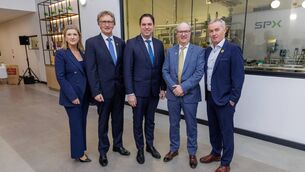GSK to bolster its ability to develop and market vaccines

GSK is focusing more on vaccine production.
GlaxoSmithKline fell behind in the Covid-19 vaccine race, but now the drugmaker is working to make sure it is on the front lines of the next pandemic.
The pharma giant is talking with the UK and other governments about building facilities to bring vaccine development and production onshore before the next crisis, said Roger Connor, its vaccines chief.
The labs would offer a range of vaccine technologies to tackle deadly viruses of the future, he said.
“When every government does their after-action review from this pandemic, they’ll start to think about manufacturing within their own boundary, or within their own region at least,” said Mr Connor.
Glaxo’s main R&D vaccine hubs currently are based in Belgium, Italy, and the US, with manufacturing capacity globally.
Despite being one of the world’s largest vaccine companies by revenue, Glaxo wasn’t among the frontrunners in developing a Covid-19 shot.
Its sluggish effort disappointed some shareholders, and a decision by activist investor Elliott Management to buy a significant stake in the company has increased scrutiny of its strategy.
Still, positive data from two vaccine trials last week — with partners Sanofi and Medicago — suggest Glaxo may yet play a role in the pandemic effort.
The company is about to undertake a huge restructuring, spinning off its consumer health division next year and leaving the biopharma and vaccines arms together.
Mr Connor describes the vaccines business as a “crown jewel” that has been undervalued, and its pandemic preparedness plans are one of the ways it can prove this:
To prepare for a future pandemic, “you need to have fill-finish, you need to have bulk, you need to have technology choice, you need to have an R&D engine that connects very well to academia, to government monitoring of virus evolution — and GSK brings all of those things,” he said.
Many countries were caught flat-footed last year when the coronavirus swept across the globe, leading to tensions over supplies and even export bans to keep shots and their ingredients at home. That’s contributed to vast disparities in immunisation rates between rich and poor nations around the globe.
• Bloomberg












